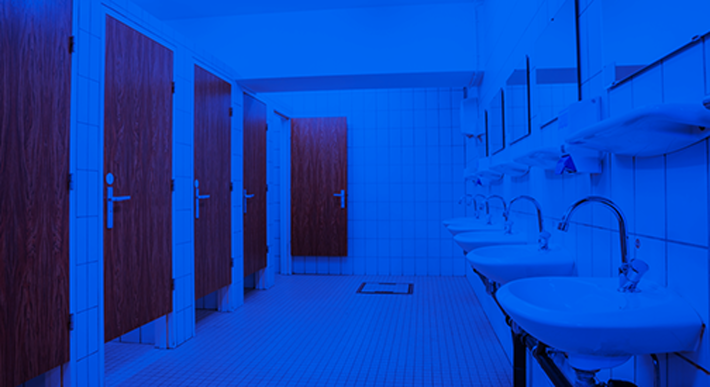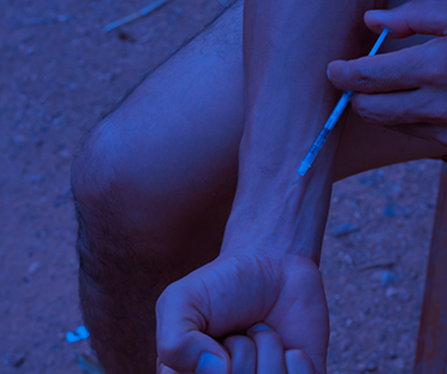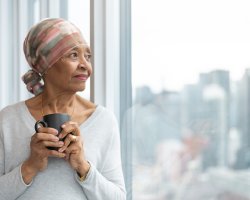Will Blue Lights Succeed in Stopping Pennsylvania Overdoses?

Have you ever walked into a public restroom and found that it was only lit with blue lights? If you have never injected drugs, the reason for the blue lights was probably incomprehensible. If you have injected drugs, you probably intuitively grasp the reason: They were installed in an attempt to discourage patrons from injecting drugs in those rooms.
Injecting drug users need to find a blue vein into which to inject their drug. Visually locating a superficial—and therefore visible—blue vein is the safest way to decide on an injection site. Missing a vein and injecting drugs into soft tissue or muscle can lead to serious infections. But when the only private space available to a drug user is flooded with blue light, veins become invisible. The idea is that an injecting drug user will go elsewhere or possibly be discouraged from injecting drugs that day—this last outcome being fairly unlikely.
A Sheetz gas station in New Kensington, Pennsylvania recently received media attention for the intense blue lighting in its restrooms. The change was spurred by the high numbers of lives lost to overdoses in New Kensington’s county—179 deaths between January and November 2016, bypassing the 174 lives lost in the entirety of 2015.
But Will the Blue Lights Help?
Blue lighting is not very likely to be effective in reducing the number of overdoses in the county, but it might drive the users to other locations. The public relations manager of the gas station chain explained that the lighting change "is designed to help our customers and employees avoid dangerous situations.” In other words, they don’t want customers or employees to stumble on someone in the process of shooting up and they want to prevent fatal overdoses on their premises.
They are not the only kind of business to have to change gears to deal with this epidemic. In the summer of 2017, CNN reported that some libraries are beginning to keep the opioid antidote naloxone on hand to reverse overdoses. In three cities, Philadelphia, Denver and San Francisco, librarians have been trained how to respond to overdoses.

Is there any possibility the blue lights will deter drug users from finding that elusive vein and shooting their drugs? A group of Canadian researchers gathered up 18 injecting drug users and asked them if blue lighting would be a deterrent for them. They acknowledged that the blue light makes injecting more difficult. Some would find somewhere else to inject and others would try to inject by touch. No one said the lighting would inspire them to quit using drugs.
Blue Lights, Blue Pills
In another recent development, a pharmaceutical company applied for Food and Drug Administration (FDA) approval for a new painkiller formulation. Their proposed drug called Rexista would turn a person’s nose or mouth and lips blue if they tried to misuse it by crushing it and snorting it or chewing it. The FDA rejected the application, feeling that the blue dye in these pills offered minimal deterrent to misusers.
Are blue lights and blue pills the way to fight overdoses? Sometimes, a person or a company feels they must try to find short-term solutions to alleviate the sickness and death. That effort and the intentions behind them are commendable. But these measures are not likely to prevent anyone who really feels the need to use opioids from doing so.
What Can We Do About it?
What must be done to reverse this devastating epidemic? The fact is that changes must occur on so many fronts—law enforcement, justice, medical, rehabilitation, community activism, our educational system and even in American homes.
At Narconon centers across America and around the world, we offer an alternative to the kinds of addiction treatment that utilizes drugs like buprenorphine, Suboxone, Vivitrol, antabuse and several other drugs. The Narconon program utilizes generous doses of nutrition found to ease withdrawal symptoms and enhance detoxification plus innovative techniques to calm spasms and anxious feelings. The program continues with a thorough life skills training component that helps prepare a person for the sober decisions that need to be made every day.

With an addicted person, the way to prevent future overdoses is to enable him (or her) to enjoy a productive life after rehab. That is the goal of the Narconon program and that is the result that has been delivered to tens of thousands of our graduates over the last fifty years. Learn more by calling us at 1-(800) 737-5250.


 ®
®